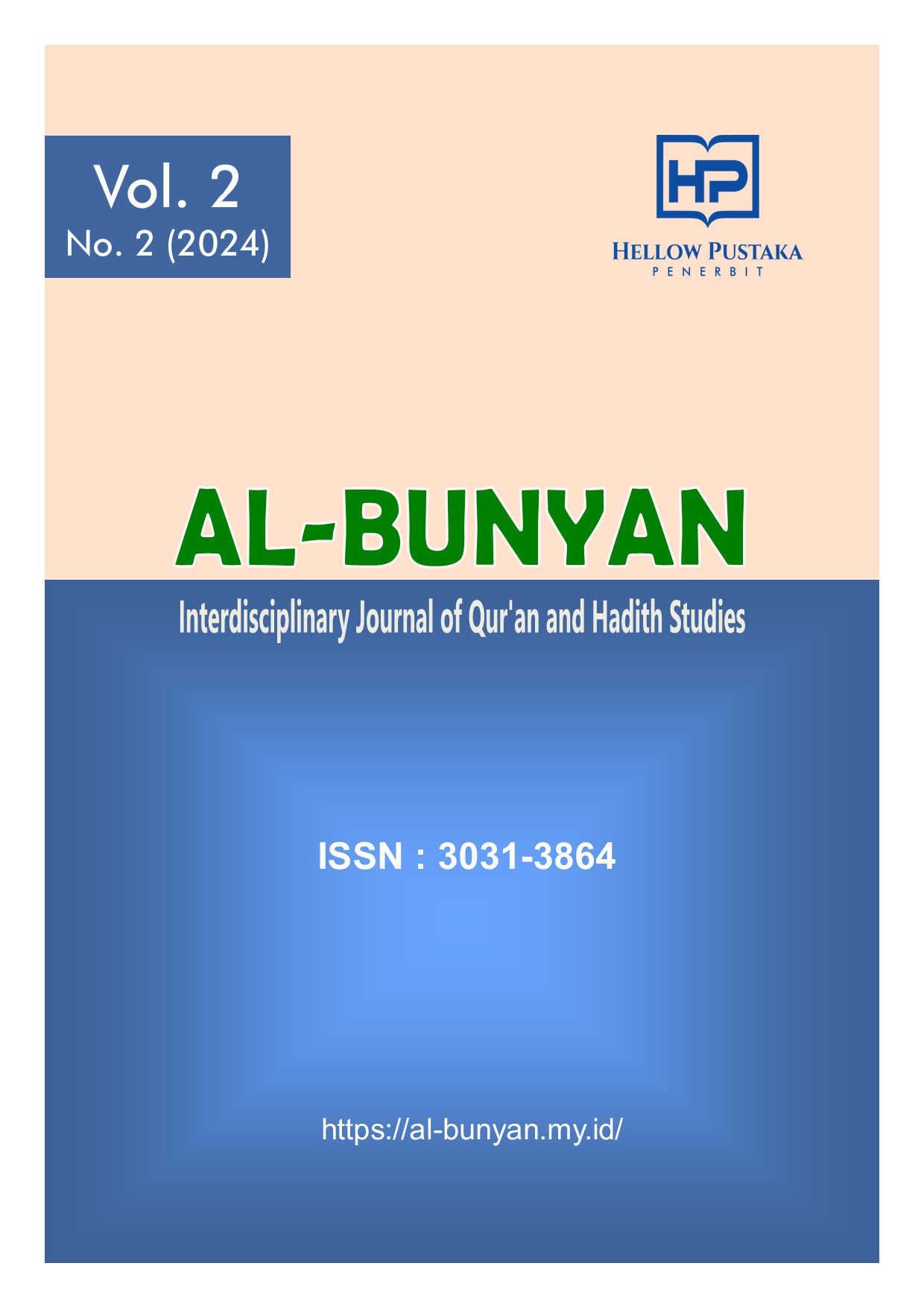Hadith Research Methodology in the Perspective of Syuhudi Ismail's Thought
DOI:
https://doi.org/10.61166/bunyan.v2i2.25Keywords:
Sanad Research, Matan Research, Syuhudi IsmailAbstract
This research aims to explore and analyze hadith research methodology from the perspective of Syuhudi Ismail, a Muslim scholar known for his contributions to hadith studies. In facing the complexity of contemporary challenges, hadith methodology has an important role in supporting the understanding and dissemination of Islamic teachings. Syuhudi Ismail, with his critical thinking approach, has made a significant contribution to the development of hadith research methodology. This research will identify the methodological principles proposed by Syuhudi Ismail, and explain the context of his thinking, using library research methods. The results of this research state that in Syuhudi Ismail's concept of thought, the object of hadith research is divided into 2, namely sanad research (Naqd al Khariji) and matan research (Naqd al-Dakhiliy). In sanad research (Naqd al Khariji), it begins with carrying out I'tibar al-Sanad and then continues with researching the personalities of the narrators and their methods of narration. In this research on sanad, Syuhudi mentions the elements of the rules for the validity of sanad in the simplified terms "major and minor rules". Meanwhile, in Matan Hadith research activities, Syuhudi gave several steps that researchers must take, including: 1). Examining the matan after looking at the quality of the sanad, 2) looking at the meaningful arrangement of the matan pronunciations, 3) examining the content of the matan, and concluding the results of the research on the matan hadith. The results of this research on hadith matan will revolve around two options, whether the matan hadith is shahih or dha'if.
Downloads
References
Abdurrahman. “Membangun Metodologi Penelitian Matan Hadits” Jurnal Pusaka, Vol 1, No. 1. September-Desember, 2013.
Anggoro, Taufan. “Analisis Pemikiran Muhammad Syuhudi Ismail Dalam Memahami Hadis” Diroyah: Jurnal Ilmu Hadis, Vol. 3, No. 2. Maret, 2019.
Anwar, Raihan. “Temporalitas Hadis dalam Buku Hadis Nabi yang Tekstual dan Kotekstual Karya M. Syuhudi Ismail”. Skripsi, UIN Syarif Hidayatullah, Jakarta, 2022.
Dadah. Dan Cecep Rahmat. “Metode Kritik Hadis Perspektif Muhammad Syuhudi Ismail” Jurnal Studi Hadis Nusantara Vol. 4, No. 2. Desember, 2022.
Damanhuri. Metodologi Penelitian Hadis Pendekatan Simultan. Sidoarjo : Al Maktabah, 2014.
Evanirosa. Dkk. Metode Penelitian Kepustakaan (Library Research). Bandung : Media Sains Indonesia, 2022.
H., Muh. Nasrullah. Jannatul Husna, & Waharjani. “Syuhudi Ismail Dan Pengembangan Pemikiran Hadis Di Indonesia: Studi Analisis Konsep Pemahaman Hadis” Risalah: Jurnal Pendidikan dan Studi Islam Vol. 8. No. 2. Juli, 2022.
Juriono, “Penerapan Metode Tahlili dalam Syarah Hadis” Al-Mutabar : Jurnal Ilmu Hadis, Vol. 11, No. 2. Juli, 2022.
Kurniawan, Benny. “Metodoligi Memahami Hadis” An-Nidzam Vol. 7, No. 1 (2020)
Musaddad, Endad. Pemikiran Hadis Suhudi Ismail. Banten : Media Madani, 2023.
Nur, Sofyan. “Jenis Dan Langkah Penelitian Hadis” NUKHBATUL ‘ULUM : Jurnal Bidang Kajian Islam. Vol. 3, No. 1. 2017.
Qomarullah, Muhammad. “Metodologi Penelitian Hadis Dalam Perspektif Pemikiran Nawir Yuslim” Jurnal Diya al-Afkar, Vol. 6. No. 2. Desember, 2018.
Salim, Peter. The Contemporary English-Indonesia Dictionary. Jakarta: Modern English Press, 1991.
Solihin. “Penelitian Hadis”, Diroyah: Jurnal Ilmu Hadis, Vol. 1, No. 1. September 2016.
Yuzaidi. “Metodologi Penelitian Sanad Dan Matan Hadis” Al-Mu’tabar: Jurnal Ilmu Hadis. Vol. 1. No. 1. Januari, 2021.
Downloads
Published
How to Cite
Issue
Section
License
Copyright (c) 2024 Ach. Syafiq Fahmi, Intan Dwi Permatasari, Mas'ud, Faridatul Jannah

This work is licensed under a Creative Commons Attribution 4.0 International License.
















